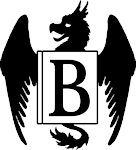The Wolf in the Whale
Jordanna Max Brodsky
Redhook
Fiction, Fantasy
Themes: Avians, Canids, Diversity, Girl Power, Myth-Based Stories, Religious and Spiritual Themes, Shapeshifters, Wilderness Tales
****+
Description
Since the oldest times, the Inuit have lived in the land of the caribou and the white bear, telling stories of the ancestors and the spirits of the world around them. Omat, child of a fallen hunter, was born with the late man's spirit and the blessing of the great Wolf, a clear sign that she will become the next angakkuq, the shaman, of their small band, invoking the powers and guidance of the spirit world to keep the people safe. But even in their isolated settlement on the very eastern edge of the land, there are some who doubt her destiny; her soul is male, but her body female, and there are taboos about the roles of men and women that could threaten retribution from the spirit world if violated. She must prove herself always, even to her own milk-brother Kiasik, if she is to fulfill her destiny... but when she is ripped from her family and drug to the very edge of the vast open waters, Omat encounters a threat beyond anything she has imagined: a strange, pale-skinned people with gleaming blades and hair like fire, who bring their own warlike pantheon of gods to her shores. She will do anything to save her people... but the Inuit spirits and the Norse gods have already marked her as the herald of the end of days.
Review
The Wolf in the Whale is inspired by the explorations of the Viking Leif Erickson and his warlike daughter,
Freydis, who briefly established a settlement in what they called Vinland before abandoning the "New World" for over
five centuries... a settlement whose time frame coincided with the eastward expansion of the Inuit. There is evidence
that indiginous resistance was involved in Vinland's abandonment, though of course concrete details are almost
impossible to ascertain over a thousand years after the events in question. From these historic threads and copious
research into Norse and Inuit cultures, Bordsky deftly weaves in elements of religion and magic and very human culture
clashes, turning the encounter into something worthy of a saga.
From the moment of her birth, Omat's grandfather Ataata recognizes the signs of a future shaman and heir to his
position as leader and liaison with the spirits - a position that brings very real powers, but also carries great
burdens, for the spirits of the Inuit can be fickle and tricky and even cruel. What Ataata doesn't realize is that
Taqqiq, the Moon man, has foreseen Omat's destiny and already harbors great anger toward her from her first breaths.
Meanwhile, Omat grows up raised as a boy and a man-to-be; it is only several chapter in that she and the reader
realize that, though her soul is that of her father, her body is female. (She narrates her tale in the first person,
concealing this as she sees herself as a boy.) This is not unheard of in their people, according to Ataata - after
all, it is known that the souls of the dead return to be reborn in the living, so of course sometimes "boy" and "girl"
souls end up in a different body - but it is rare enough that the others in her small, struggling settlement are
uncomfortable at times with the arrangement, worried about breaking one of the strict taboos that could bring ill
luck and doom upon them all when they are already much dwindled from when they first arrived in this new territory.
Still, Omat is confident she can win her kin over, even successfully completing her vision quest to receive her spirit
guides and shaman powers... until strangers arrive to destroy everything she has worked towards, and the spirits
themselves betray her. Even that devastation pales in comparison to what she finds when she is essentially traded
away to the cruel strangers, the coming of the Norsemen and the slaughter that changes everything. Even then, things
might have been different if the men in the blue cloaks and great boats hadn't taken her milk-brother Kiasik captive
when they sailed off, driving Omat to undertake a dangerous, even epic journey far from the lands and spirits she
knows to find him again. Along the way, she encounters an outcast Norseman, Brandr, who challenges everything she
thinks she knows about the strangers... and herself. Meanwhile, the spirits and gods play their own games, as usual
thinking nothing of the mortals they use as game tokens and tools (even the Inuit spirits don't exactly coddle their
humans, particularly the powerful entities behind the Moon and the Sun and the sea), while myths and stories form a
framework for sharing knowledge.
There are times when the story threatened to slip in the ratings, some moments where I was prepared for the story to
go one way and disappoint me, only for it to ultimately go another and pleasantly surprise me. That said, I'd
definitely include a trigger warning for sexual assault, and one for canine fates. But Omat remains a strong,
compelling hero/heroine throughout (she sees herself as both man and woman throughout, straddling the line between
genders as a shaman straddles the line between the waking world and the spirit realm), far from flawless but rarely
giving up for long and willing to learn from mistakes. Bordsky does a superb job bringing the world of the Inuit to
life, as well as the Norse culture she so unexpectedly and violently encounters, making the people more than simple
caricatures. It makes for a solid story of mythic proportions with ideas and images that linger well in the
memory.
